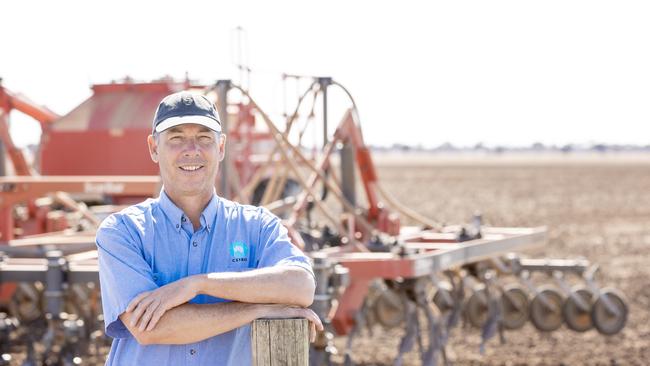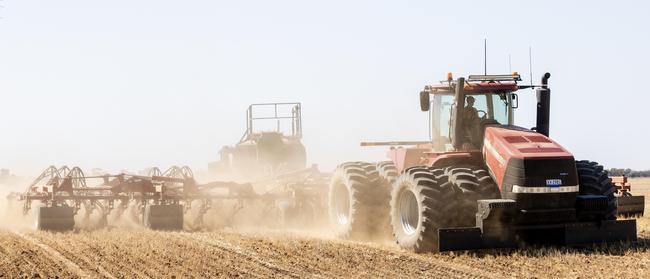Using data to reduce costs: How farmers can manage expensive inputs
Learning about data advances promises to help farmers reduce costs and manage inputs. See how it could help during a dry year.
A data-driven approach could be the key to helping farmers cut costs and maximise costly inputs in a dry year.
With no rain on the horizon for at least 10 days in much of southern NSW and Victoria farmers are preparing to dry sow.
They are also acutely aware of the cost involved in sowing the 2025 crop.
CSIRO research director Ben Trevaskis from Canberra recently met with farmers at the Birchip Cropping Group to discuss data platforms that can provide feedback to farmers about sustainability and inputs.
“There are digital platforms that can help grain producers make decisions that relate to increasing productivity and also meeting sustainability challenges,” Dr Trevaskis said.
Farmers have already been using technology that maps paddocks and provides indicators about how much of a certain input, such as lime, is needed.

Yield mapping can also help tell the story about productivity.
However, Dr Trevaskis said there were opportunities to look towards spatial mapping, which draws on geospatial technology, to provide further feedback.
The information can provide direct feedback about soil variability and guide farmers when making precision-based decisions rather than uniformly applying an input in a blanket approach.
“Spatial mapping can help to get more efficiency out of (farming) systems,” Dr Trevaskis said.
While 2025 remains dry in Victoria and southern NSW, Dr Trevaskis said the technology could be drawn upon during a wet year, too, to help with efficiency when water was available.
Spatial mapping can draw on technology including GPS, which is already widely adopted in agriculture, and also drones and sensors, to provide specific information about a paddock.
“A little more data can help with the challenges and shifting climates in agriculture,” he said.
“Farmers are already savvy with yield and profit and they have an understanding of how data can help them further,” he said.

Birchip farmer John Ferrier said the more informed farmers were, the better they could tailor inputs to exactly where they were needed.
He said working with the CSIRO could lead to better outcomes on farm.
“What is important is that we try and be as efficient as we can, and that means being cost-saving and also being sustainable,” he said.
“Information helps us to make better-informed decisions.”
Mr Ferrier will start sowing barley next week. He said the soil was really dry on top but there was some soil moisture underneath,
He will grow wheat, canola, lentils, and barley, and he said there was no rain forecast for the next week to 10 days in his area.




